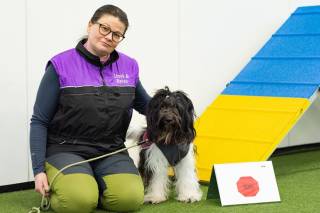Authors: Johanna Laakkonen, Promise Emeh, Miina Björninen
Photos: Jonne Renval
From degeneration to regeneration
Human-based in vitro neuronal models were still a dream, when Susanna Narkilahti studied epilepsy in animal models during her PhD. At that time, her focus was more on neurodegeneration – degradation of the nervous tissue. During the PhD, her interest shifted towards regeneration of neuronal tissue. After finishing her thesis in 2005, Narkilahti considered continuing her research career abroad but instead she ended up abandoning her laundry in the laundry room due to a sudden job interview request from Regea Institute for Regenerative Medicine in the University of Tampere. There it all started: she began as a postdoc in Regea on neuro applications.
Soon things took another turn when she found herself leading a group of researchers, which eventually became the initiation of the Neuro group in 2006. Her expertise on in vivo animal models of neurodegeneration has helped to create human cell-based neuronal models without needing to use human brain biopsies. The group’s work, in collaboration with the other CoEBoC research groups, focuses on integrating the neuronal models into more complex tissue structures to better mimic human body functions at the systemic level.
The difficulty to detach
“It’s really difficult for me”, Narkilahti admits when asked about separating work and free time. However, she emphasizes the importance of setting boundaries and making sure work messages are not read during free time. To unwind and detach from work, she enjoys spending time with her family, gardening and dog hobbies. “Some hard exercise is also great to force my thoughts away from work”, she says.

A dream team is everyone’s responsibility
Narkilahti describes her group members as awesome personalities. She considers herself incredibly lucky: “Everyone in the group, from students to postdoctoral researchers, work well together, encouraging and assisting one other”. She notes that good group dynamics and cohesion does not just happen naturally but require effort from everyone. During her early years as a group leader, she underwent several leadership training courses to improve her skills and the group has also utilized team building workshops offered by the university.
You have got to start young
Narkilahti is the first PhD in her family, which has been supportive of her education. As a child, she learned leadership skills such as taking responsibility and delegating by “commanding her younger brother”. One could say that Narkilahti’s path to being a group leader started quite early and is a good example of the “chocolate box” of life.
To learn more about Narkilahti’s research group, visit their website.

